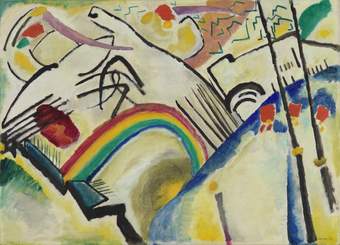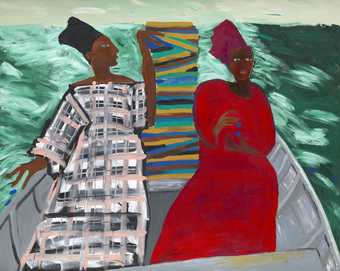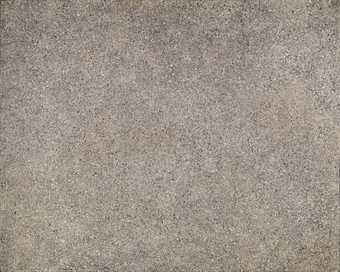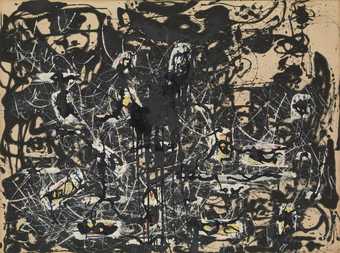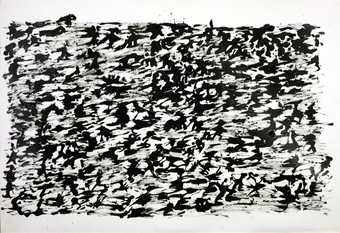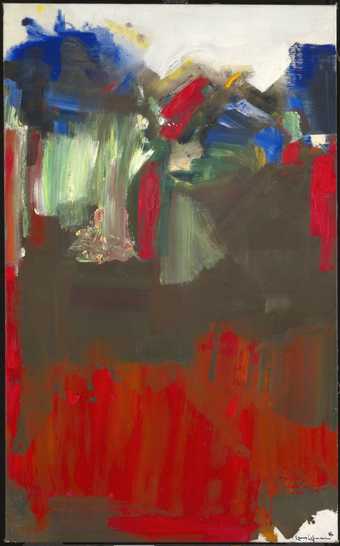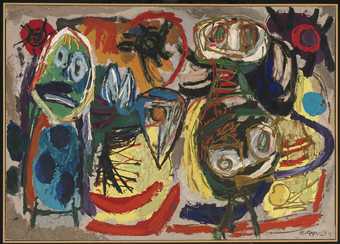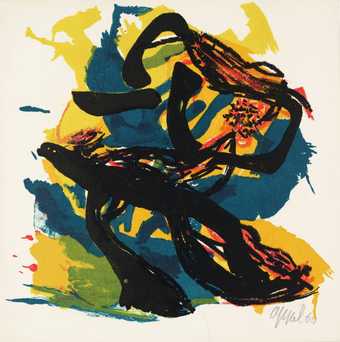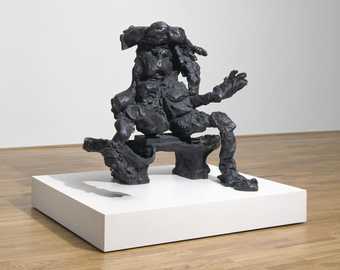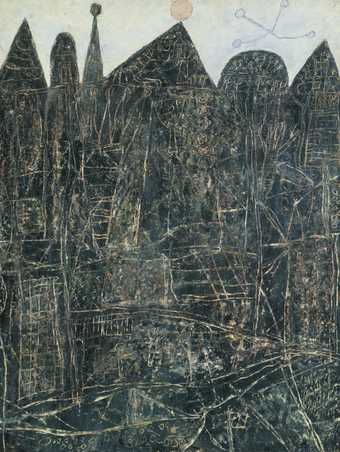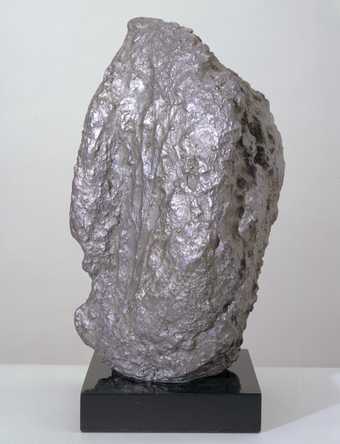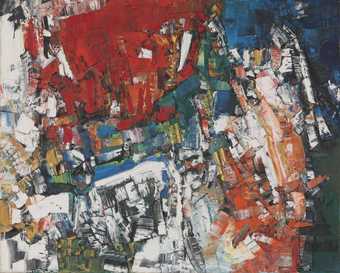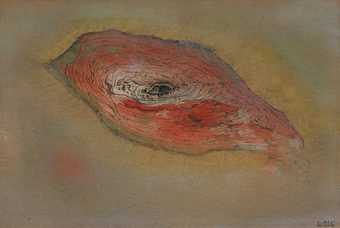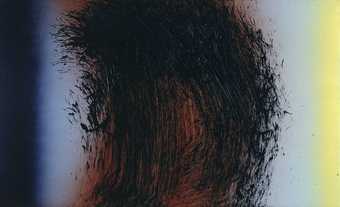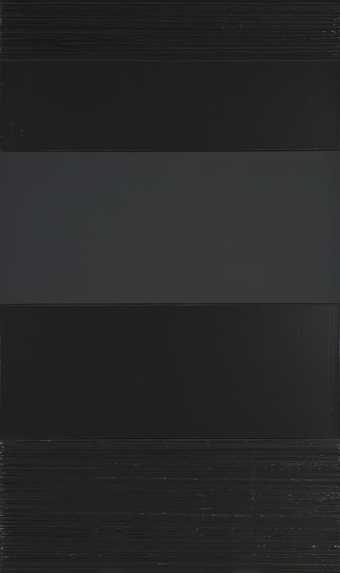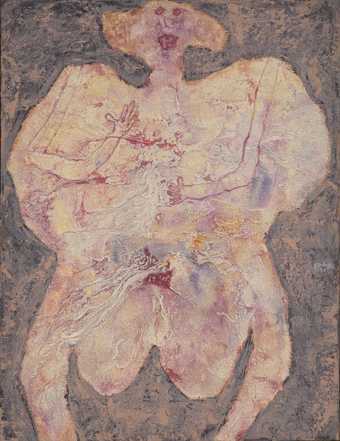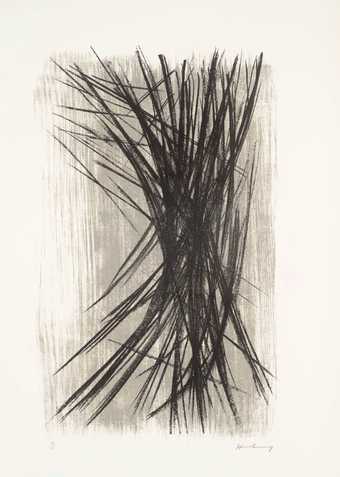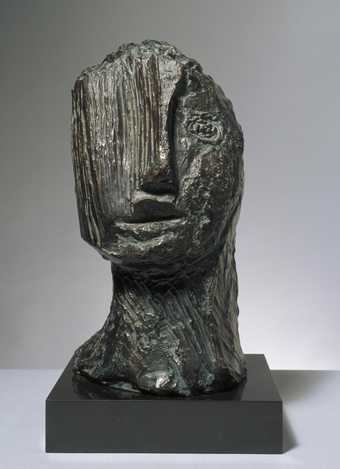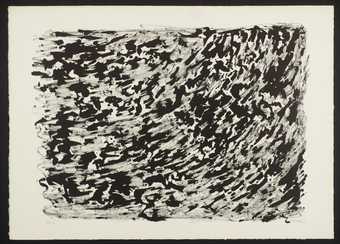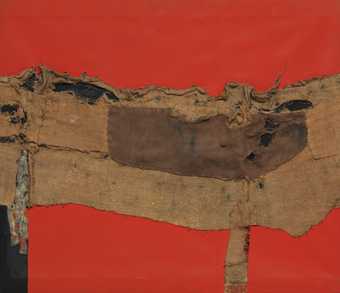
Alberto Burri
Sacking and Red
(1954)
Tate
© Fondazione Palazzo Albizzini Collezione Burri, Città di Castello (Perugia) / DACS 2024.
The term refers to many of the styles of abstract painting which were highly prevalent, even dominant, in the 1940s and 1950s, including tendencies such as tachisme, matter painting, and lyrical abstraction. It mainly refers to European art, but does also embrace American abstract expressionism. An important source of this kind of painting was the surrealist doctrine of automatism. The term was used by the French critic Michel Tapié in his 1952 book Un Art Autre to describe types of art which had in common that they were based on highly informal procedures and were often gestural. Tapié saw this art as ‘other’ because it appeared to him as a complete break with tradition.
An exhibition titled Un Art Autre was organised in Paris the same year as Tapié’s book and included Karel Appel, Alberto Burri, Willem de Kooning, Jean Dubuffet, Jean Fautrier, Georges Mathieu, Jean-Paul Riopelle and Wols. Other key figures were Henri Michaux, Hans Hartung and Pierre Soulages. The term art autre, from the title of Tapié’s book, is also used for this art, but art informel seems to have emerged as the preferred name.

